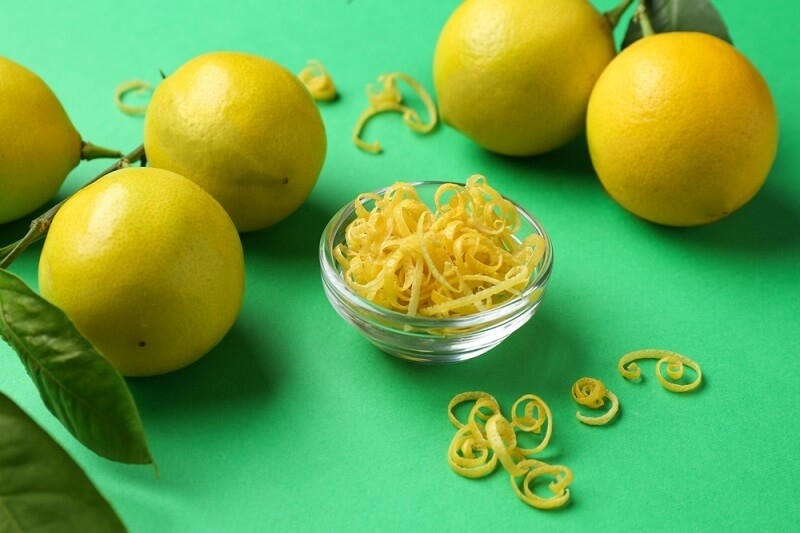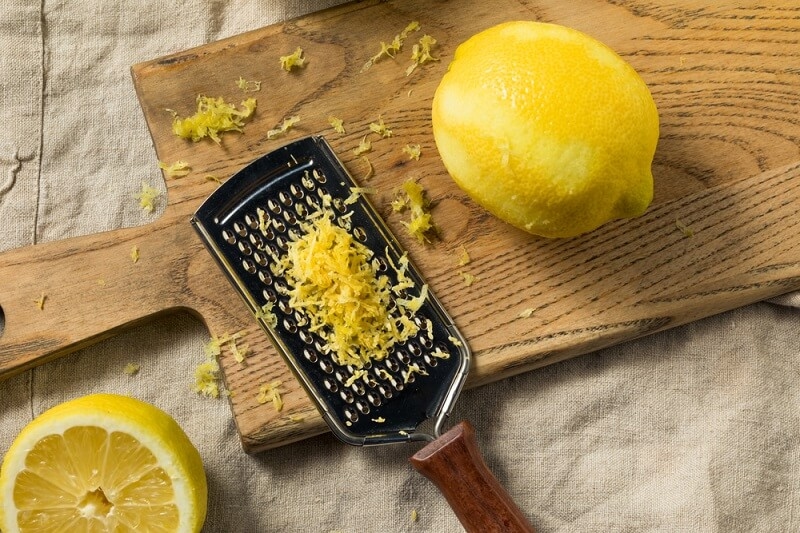
Lemons have this magical way of brightening up a dish. A squeeze of juice adds tang. A slice makes water feel fancy. But the unsung hero? The zest. That outer yellow layer that packs more punch than the juice itself. If you’ve ever wondered how to zest a lemon without making a mess or wasting half the peel, this guide is for you.
Let’s be honest: zesting sounds fancier than it is. At its core, it’s just grating the colorful skin off a lemon. But do it right, and suddenly you’re upgrading baked goods, cocktails, marinades, and even weeknight pastas. Do it wrong, and you’re stuck with bitter white pith and shredded knuckles.
So, let’s slow it down, get practical, and walk through exactly what you need, what zest is, and how to use it like a pro.
Zest is the thin, brightly colored top layer of the lemon’s skin. Not the spongy white underneath (that’s the pith — avoid it at all costs). This layer is loaded with natural oils that smell incredible and taste even better.
Think about it: when you peel a lemon and that fresh citrus scent hits your nose, that’s the oils in the zest releasing. Add it to food, and you get concentrated lemon flavor without extra liquid. That’s why recipes often call for zest when they want brightness without changing texture. So the next time you ask, what is lemon zest? — it’s basically sunshine in edible form.

There’s no one “right” tool. You can improvise with what you’ve got in your kitchen, but some tools make life easier. Here are your options:
Microplane (zester): The gold standard. It gives you fine, fluffy zest with zero fuss.
Box grater: Use the smallest side. Works well, though it can be clumsy.
Vegetable peeler: Great if you want bigger strips (perfect for cocktails). Just scrape off the pith afterward.
Paring knife: A last resort. You’ll get strips, not zest dust, but it works if you’re patient.
Pro tip: always wash and dry your lemon before zesting. Wax and dirt? Not what you want in your cake or salad dressing.
Okay, so how do you actually get the zest off the fruit without butchering it? Here’s the easiest method:
Wash the lemon thoroughly (organic lemons are best if you can get them).
Choose your tool — a Microplane is the simplest, but any of the above will do.
Hold the lemon firmly and drag it across the grater (or drag the tool across the lemon). Rotate as you go.
Stop when you hit white. That’s the pith, and it’s bitter. Just stick to the yellow layer.
Collect the zest. Tap the grater or scrape the peeler to gather up your fragrant lemon gold.
And just like that, you’ve got fresh zest ready to use. No advanced culinary school moves required.
So you’ve got your zest. Now what? This is where it gets fun. A little goes a long way, and it works in both sweet and savory dishes. Here are a few easy ideas for a quick lemon zest recipe:
Sprinkle zest into pancake or waffle batter for citrusy mornings.
Mix with olive oil, garlic, and herbs to make a bright marinade for chicken or fish.
Stir into pasta dishes — lemon zest with parmesan and black pepper is magic.
Add to baked goods: muffins, cookies, or pound cake.
Infuse cocktails. A twist of zest in a gin and tonic feels instantly fancy.
Basically, if you think a dish could use a little lift, zest is your secret weapon.
You May Also Like: 2025 Vegetarian Taiwanese Popcorn Tofu Recipe: Crispy Bite
This is a common question. Maybe you’re mid-bake, the recipe calls for zest, but you only have juice. So, can I substitute lemon juice for lemon zest? The short answer: kind of, but not perfectly.
Zest and juice don’t taste the same. Zest is concentrated, fragrant, and almost floral. Juice is tangy, acidic, and adds liquid. If a recipe calls for zest, you’ll lose some depth if you swap with juice. That said, if you’re desperate, use one tablespoon of juice for every teaspoon of zest. Just be mindful — it could change the texture of your dish.
If you’re not using it right away, don’t toss it. Fresh zest keeps in the fridge for a couple of days in an airtight container. Or, freeze it. Yes, zest freezes beautifully. Spread it out on parchment first, then store it in a small baggie. Perfect for when you want to add zest without zesting a fresh lemon.
Another hack? Make lemon sugar. Mix zest with granulated sugar, let it dry, and you’ve got an instant flavor boost for tea, baking, or cocktails.
Here’s the not-so-glamorous truth: zesting can be a little risky. Those tiny blades on a Microplane? They don’t care if it’s lemon peel or your finger.
Always keep your fingers above the grater, not curled under it.
Work slowly and rotate the lemon instead of pressing too hard.
Use the whole lemon — not just one side. It’s safer and more efficient.
Trust me, nothing ruins a recipe like adding a Band-Aid to the ingredient list.
Once you master lemon zest, don’t stop there. Oranges, limes, and grapefruits all have incredible zest. Each one brings its own character. Lime zest in guacamole? Yes. Orange zest in brownies? Heavenly. Grapefruit zest in cocktails? Absolutely.
Zest is one of those tiny kitchen skills that opens up a whole world of flavor possibilities. And once you get the hang of it, you’ll wonder how you ever cooked without it.
Recommended Article: 10-Minute Korean Spicy Fish Cake Stir Fry (Eomuk Bokkeum)
So there you have it: everything you need to know about zesting, storing, and using lemon peel like a pro. If you came here wondering how to zest a lemon, now you’ve got more than just technique — you’ve got practical ways to actually use it.
The beauty of zest is in its simplicity. No fancy gadgets, no culinary degree required. Just a lemon, a tool, and a little curiosity.
Try it once, and I promise you’ll be hooked. That bright, fragrant punch will sneak into everything you cook — not because you have to, but because you’ll want to.
This content was created by AI